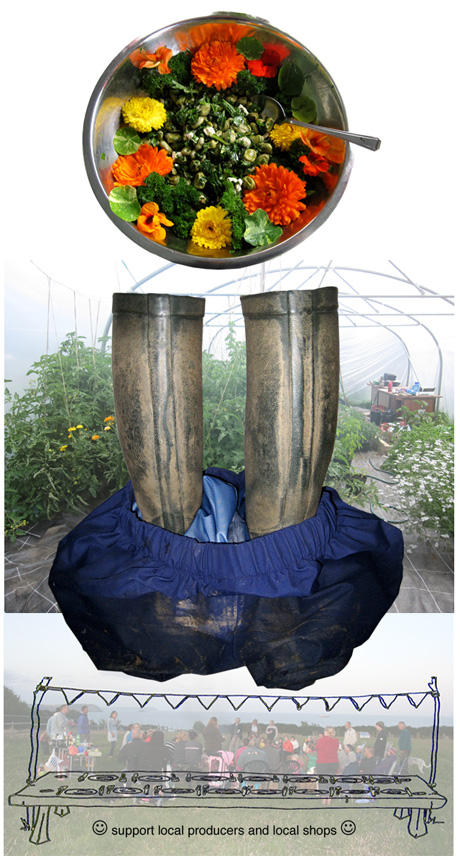Alyson Hallett (friend and Caravanserai ‘writer-in-residence’ August 2009) & Professor Catherine Leyshon-Brace (my PhD supervisor) were succesful in securing a Leverhulme award for Alyson to be poet-in residence within the Geography dept at Univ Exeter Tremough campus.
Cannot Unsun – a poem written for Kate
Alyson’s post began in September and today she is holding her first ‘Geopoetic Lunch’ with students and staff from the Geography and English-with-creative-writing departments, “an opportunity to talk about the exciting territories of poetry and geography and the ways in which they connect and diverge”.
The main aim of the lunch is to create a friendly environment where our concerns and passions about creativity and landscape can be explored in an informal, inspiring and nourishing way.
Todays lunch showcases work by the CLIF project (CLIF ran a pilot research stall at a Caravnaserai event in 2009 and also discussed various ideas with Mac about creative writing in response to people experiencing climate change locally).
Unfortunately we couldn’t be there today to catch up with the developments of the CLIF project but we’ve donated some chutney for the table, a nourishing product of immersive landscape practice – gardening
The garden is central to Caravanserai – it’s where we began working with Pete & Debs at Treloan and continues to be a collective learning process and source of surprise and nourishment.

We began cultivating the plot in Middle Close (the project field) in 2008, building pens to house the pigs that dug the ground for us. During the same period we sourced a suitable caravan for a residency space (the project van).
Since then Caravanserai has hosted artists, writers, musicians, storytellers, foragers, geographers, academics and students through various residencies, work placements, field visits and project events.
The garden sustains this hospitality, its produce graces the tables of resident guests and visitors, providing food and flowers for the honesty stall and events such as our annual local food banquet ‘feast'(2009 & 2010) and fireside gatherings.
Currently we’re preparing the ground for new growth..















